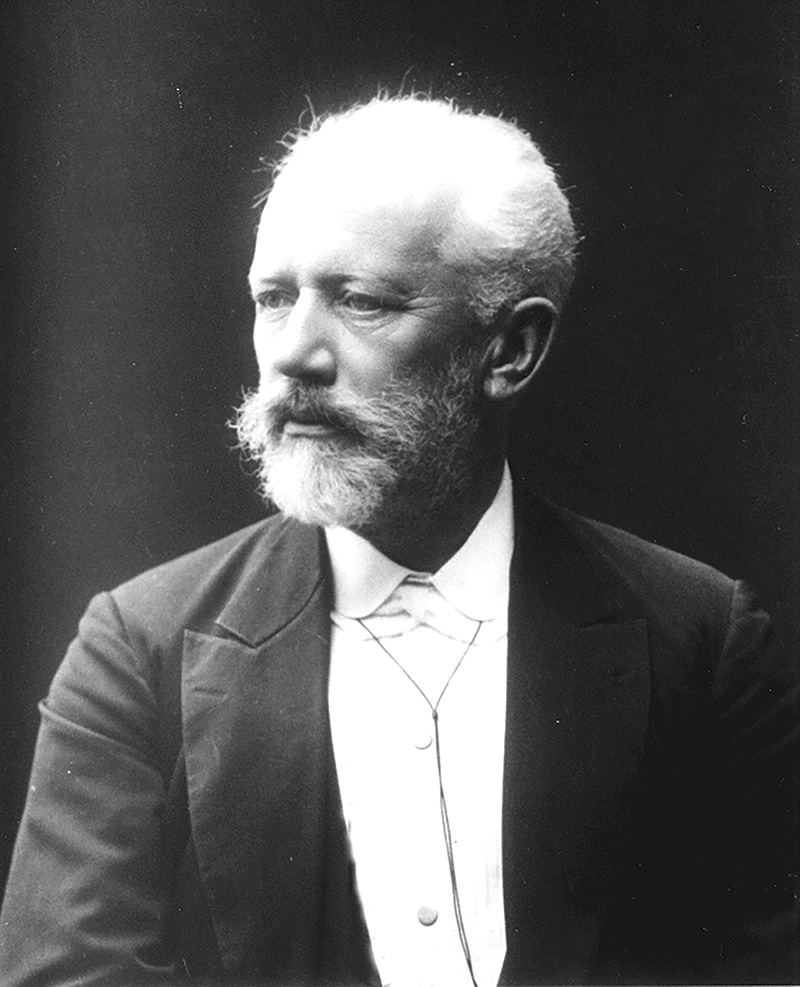Piotr Ilyich Tchaikovsky

- Born: May 7, 1840, Votkinsk, Russia
- Died: November 6, 1893, St. Petersburg
Symphony No. 6 in B Minor, Op.74, Pathétique
- Composed: 1893
- Premiere: October 28, 1893 in the Hall of the Nobility in St. Petersburg, Tchaikovsky conducting
- Instrumentation: 3 flutes (incl. piccolo), 2 oboes, 2 clarinets (incl. bass clarinet), 2 bassoons, 4 horns, 2 trumpets, 3 trombones, tuba, timpani, bass drum, crash cymbals, tam-tam, strings
- CSO notable performances: First Performance: January 1899, Frank Van der Stucken conducting. Most Recent: November 2017, Louis Langrée conducting. Recorded in 2007, Paavo Järvi conducting. This work has been conducted by every CSO Music Director.
- Duration: approx. 48 minutes
Tchaikovsky died in 1893, at the age of only 53. His death was long attributed to the accidental drinking of a glass of unboiled water during a cholera outbreak, but that theory has been questioned in recent years with the alternate explanation that he took his own life. Though the manner of Tchaikovsky’s death is incidental to the place of his Sixth Symphony in music history, the fact of it is not.
Tchaikovsky conducted his B Minor Symphony for the first time only a week before his death. It was given a cool reception by musicians and public, and Tchaikovsky’s frustration was multiplied when discussion of the work was avoided by the guests at a dinner party following the concert. Three days later, however, his mood seemed brighter, and he told a friend that he was not yet ready to be snatched off by death, “that snubbed-nose horror. I feel that I shall live a long time.” He was wrong. The evidence of the cause of his death is not conclusive, but what is certain is the overwhelming grief and sense of loss felt by music lovers in Russia and abroad as the news of his passing spread. Memorial concerts were planned. One of the first was in St. Petersburg on November 18, only 12 days after he died. Eduard Napravnik conducted the Sixth Symphony on that occasion, and it was a resounding success. The “Pathétique” was wafted by the winds of sorrow across the musical world, and it became—and remains—one of the most popular symphonies ever written.
The music of the “Pathétique” is a distillation of the strong residual strain of melancholy in Tchaikovsky’s personality rather than a mirror of his daily feelings and thoughts. Though he admitted there was a program for the Symphony, he refused to reveal it. “Let him guess it who can,” he told his nephew Vladimir Davidov. A cryptic note discovered years later among his sketches suggests that the first movement was “all impulsive passion; the second, love; the third, disappointments; the fourth, death—the result of collapse.” It is not clear, however, whether this précis applied to the finished version of the work, or if it was merely a preliminary, perhaps never even realized, plan. That Tchaikovsky at one point considered the title “Tragic” for the score gives sufficient indication of its prevailing emotional content.
The title “Pathétique” was suggested to Tchaikovsky by his elder brother, Modeste. In his biography of Peter, Modeste recalled that they were sitting around a tea table one evening after the premiere, and the composer was unable to settle on an appropriate designation for the work before sending it to the publisher. The sobriquet “Pathétique” popped into Modeste’s mind, and Tchaikovsky pounced on it immediately: “Splendid, Modi, bravo. ‘Pathétique’ it shall be.” This title has always been applied to the Symphony, though the original Russian word carries a meaning closer to “passionate” or “emotional” than to the English “pathetic.”
The Symphony opens with a slow introduction dominated by the sepulchral intonation of the bassoon, whose melody, in a faster tempo, becomes the impetuous first theme of the movement. Additional instruments are drawn into the symphonic argument until the brasses arrive to crown the movement’s first climax. The tension subsides into silence before the yearning second theme appears, “like a recollection of happiness in time of pain,” according to musicologist Edward Downes. The tempestuous development section, intricate, brilliant and the most masterful thematic manipulation in Tchaikovsky’s output, is launched by a mighty blast from the full orchestra. The recapitulation is more condensed, vibrantly scored, and intense in emotion than the exposition. The major tonality achieved with the second theme is maintained until the hymnal end of the movement. Tchaikovsky referred to the second movement as a scherzo, though its 5/4 meter gives it more the feeling of a waltz with a limp. The third movement is a boisterous march. The tragedy of the finale is apparent at the outset in its somber contrast to the explosion of sound that ends the third movement. A profound emptiness pervades the symphony’s closing movement, which maintains its slow tempo and mood of despair throughout.
—Dr. Richard E. Rodda